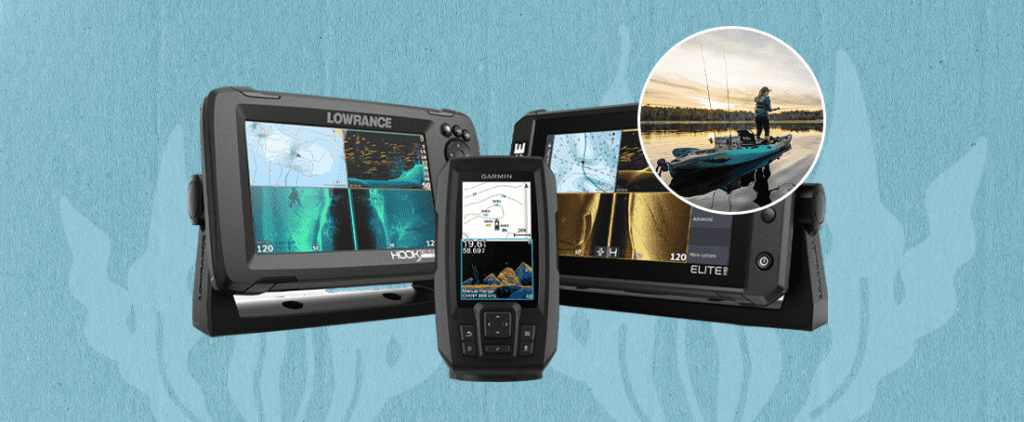
We may earn a commission through products purchased using links on this page. Products or services advertised on this page may be offered by an entity that is affiliated with us. Learn more about our process here.

Daddy by day, fisherman at night.
Kayak fishing can be a lot of fun, and more, if you can find the fish without spending hours on the water. The best fish finder for kayak fishing can change the way you used to plan your kayak adventures. Check out the ones we tried out and reviewed so that you can get a great fish finder without the long search.
Best Cheap Fish Finder For Kayak
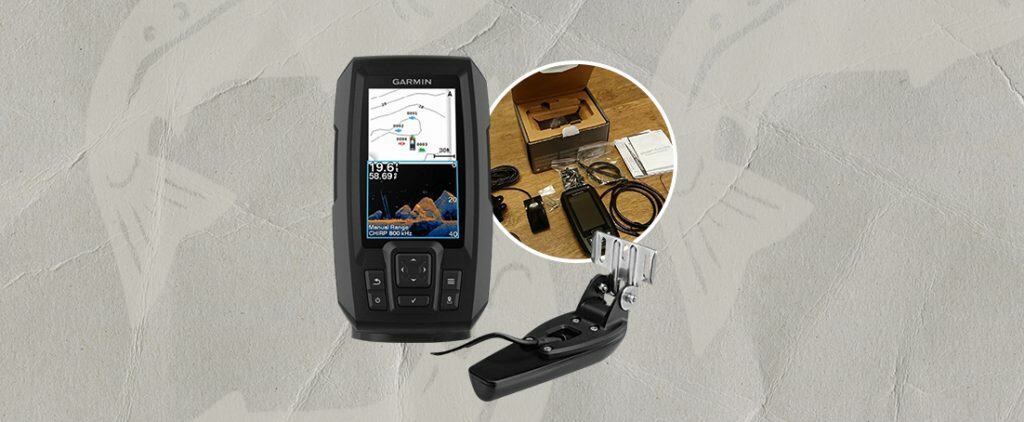
- High sensitivity GPS to mark waypoints,
- Quickdraw Contours for accurate locations
- Colorful sonar is an excellent way to see the maps
- Mountable for convenience
Best Portable Fish Finder For Kayak
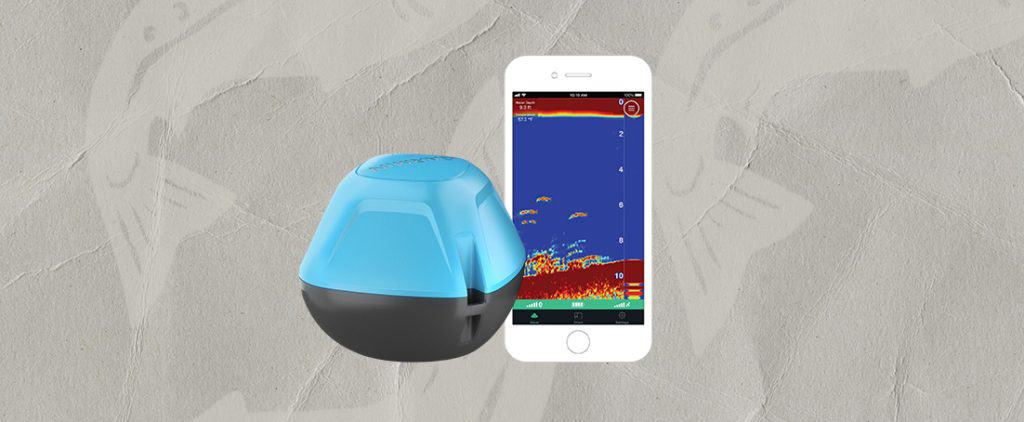
- The battery life is more than nine hours, enabling anglers to have more fun
- Easy to interpret 2-D sonar
- Ice fishing is possible with this fish finder
Best Fish Finder For Hobie Kayak
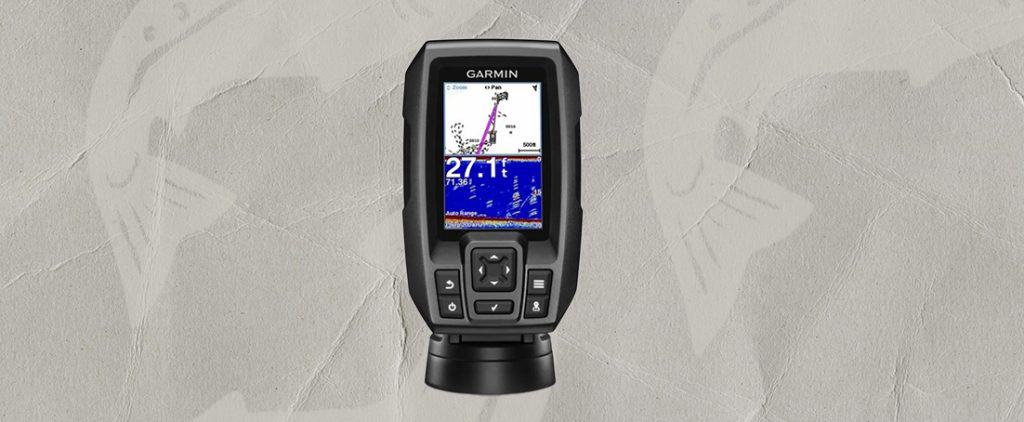
- Good size for kayak fishing
- Good depth of scanning
- Vertical jigging and ice fishing possible with this fish finder
Table of Contents
Quick Overview - Best Fish Finder For Kayak
All of the kayak fish finders that our enthusiastic, and observant reviewers liked are listed here for your convenience. Our detailed reviews will help you select the right device for the kind of setup you are looking for. Whichever device you choose will be the best fish finder for kayak fishing.
1. Garmin Striker Vivid 4CV

- Mountable: Yes
- Built-in Receiver: Yes
- GPS: Yes
- Sonar Technology: Above Average
- Waterproof: Yes
Pros
- High sensitivity GPS to mark waypoints
- Quickdraw Contours for accurate locations
- Colorful sonar is an excellent way to see the maps
- Mountable for convenience
Cons
- Too many buttons for every function
- ClearVu does not add more to the traditional sonar, which is good enough to locate fishing spots
2. Garmin Striker Cast

- Built-in Receiver: Yes
- Displays Sonar: Yes
- Bluetooth Pairing: Yes
- Fish Symbol ID: Yes
Pros
- The battery life is more than nine hours, enabling anglers to have more fun
- Easy to interpret 2-D sonar
- Ice fishing is possible with this fish finder
Cons
- The Wi-Fi signal gets weak with distance
- The Garmin Striker Cast is not waterproof for long periods
3. Garmin Striker 4

- Built-in receiver: Yes
- Displays sonar: Yes
- Split-screen zoom: Yes
- Depth range shading: Yes
Pros
- Good size for kayak fishing
- Good depth of scanning
- Vertical jigging and ice fishing possible with this fish finder
Cons
- Screen becomes dull after a few months
- The view is grainy and unclear at times
4. Lowrance Hook Reveal 7

- SD Storage card: Yes
- Easy interface: Yes
- GPS: Yes
- Waterproof: Yes
- Good display quality: Yes
Pros
- Less setup time needed so you can focus on fishing more
- 0.5 foot contour maps for accuracy
- Auto-tuning sonar for deep and shallow waters
Cons
- Cannot load Genesis Live data
- Costs much more than all the other fish finders for kayak fishing
5. Lowrance Elite FS 9

- Bluetooth: Yes
- GPS: Yes
- Wi-Fi: Yes
- Wide Display: Yes
- Waterproof: Yes
- Down Scan: Yes
Pros
- Downscan allows a detailed view of great depths, which makes this device good for sea kayak fishing.
- The detailed maps are helpful
- You can explore wider areas with this sonar technology and frequency range
Cons
- Can be hard to manage a nine-inch screen device on a kayak
- Some anglers find it inaccurate in shallow creeks
6. Humminbird Piranhamax 4
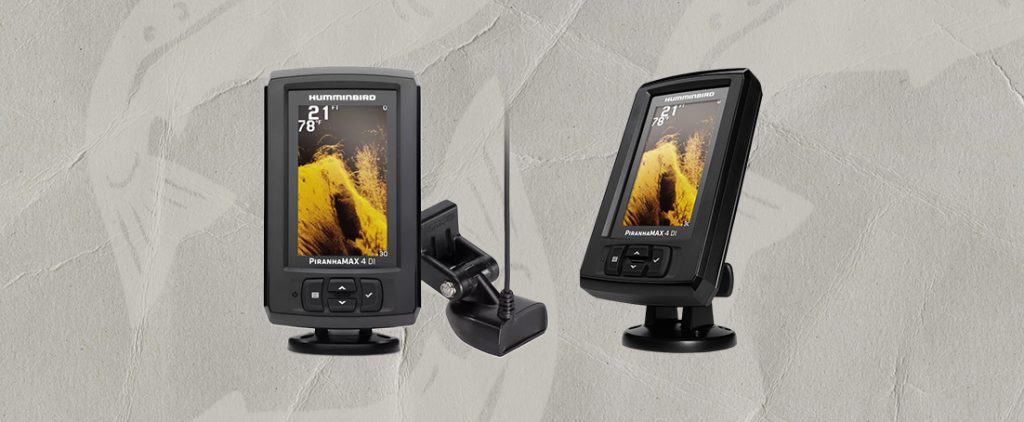
- Dual beam sonar: Yes
- Mountable: Yes
- GPS: Yes
- Memory card: Yes
- Depth Down imaging: Yes
Pros
- Dual beam sonar for better scanning
- Reliable GPS
- Good size for kayak fishers
Cons
- No power onboard, you will have to use rechargeable batteries
- Kayak fish finder should be more clear than the Hummiinbird Piranhamax 4
7. Deeper Chirp 2
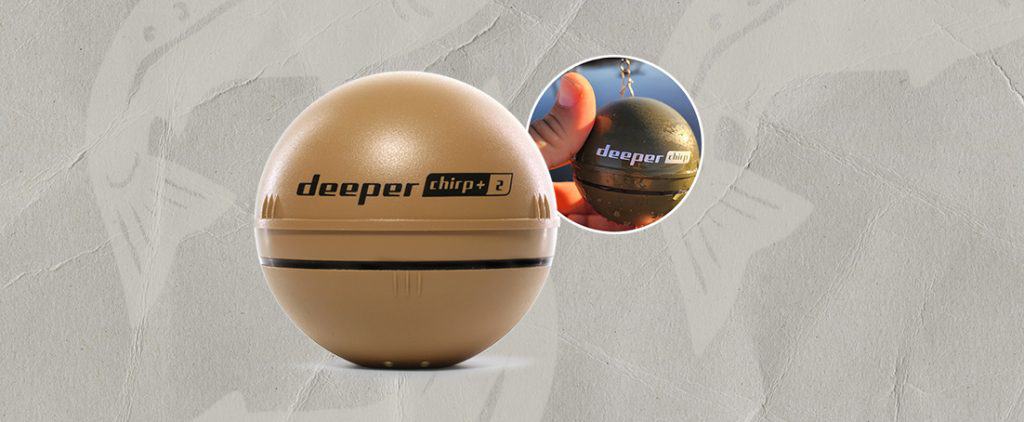
- Castable: Yes
- Wi-Fi: Yes
- Three beam frequencies: Yes
- Portable: Yes
Pros
- Powerful battery so more time to cast the device
- Frequencies to map all depths of water
- Good for kayak fishing due to no space occupation
Cons
- Waterproofing does not work sometimes
- The Wi-Fi connection can break while mapping
How to Choose the Best Fish Finder for Kayaks Based on Technique affordability & characteristics
Deepwater
When looking for the best kayak fish finders, anglers may want to select one that allows deepwater fishing. Kayak anglers are considered more adventurous and some of them like to try the techniques that involve casting the bait to a greater depth.
If they have a fish finder that can support this deepwater cast by giving the right location, there can be nothing better. Anglers can select a fish finder that has Down Imaging.
Structure Fishing
Structure fishing is to explore the topographical factors such as ridges, rocks, even weeds and plantation. A fish finding device that can identify timber, ridges, rocky terrain and even deep crevices is going to be the best one.
All anglers like to fish in challenging places. This sport involves a lot of tactic, and if you are in a kayak, you will have to keep the balance while you look for fishing spots that are accessible with the limited fishing gear you have onboard.
Many great fish finders can map the underwater topography accurately, and you will need such a device if you want to go back home with some good catches in the creel. Select a device that has GPS, which can help you decide where you would like to fish.
Shallow Fishing
If you choose to fish in shallow creeks and streams, a fish finder with varying frequencies will be a good choice. You can set the frequency to locate fish in shallow waters, while the maps that appear on the screen will work efficiently to provide the closest locations of fish.
Similarly, if you use a castable fish finder, it may not give you accurate results. Select a fish finder with good sonar technology, and a clear display screen to provide the accurate locations of fish in waters where there may be smaller rocks and not many deep ridges or crevices.
Saltwater vs. Freshwater
When fishing in the sea or on the shore, a castable fish finder works well because you can cover more area in a single cast. The maps on the screen of your device can be of the areas under and around the boat. You can even cast the fish finder far away from the boat to get a clearer idea of the fishing spots near you.
Display
We have said it before, if the fish finder display is not clear, you will not be able to enjoy fishing with any kind of fish finder, no matter how many features it offers. Choose a device that has colorful display and close contours to denote the deeper areas of the water body.
Moreover, it is essential for all anglers to use a device that has clear visuals because nobody wants to spend more time trying to figure out what the screen is showing. Fish ID is another display feature that prepares anglers to present the right lures according to the fish in the area.
When fishing from a kayak, anglers have limited lures and it is best to know the kind of fish species in the area so that they do not spend too much time casting the lure time and again.
Method of Imaging
Most fish finders have side imaging and down imaging, which helps anglers get a view of the water body below their kayak, and also on the sides. The method of imaging that your device offers must be according to the kind of place you select to catch fish.
Are you fishing in a lake? You will need a fish finder with down and side imaging. If you are in shallow water, a high-frequency device with side imaging will work best.
A 360-degree imaging sonar rotates to send signals in all directions and you may need this kind of sonar technology when you are fishing in deep seas. The various methods of imaging can help anglers significantly if they select the right one according to their needs.
Depth
The transducer depth detection range must be good if you want to keep the same fish finder for shallow and deep waters. These kinds of fish finders are suitable for kayaks, ice fishing and off the dock fishing.
When you are in a kayak, space is scarce, and that means that you can carry limited fishing gear. However, if you can get a peak into what lies in the depths of the water, you can maximize the chances of catching fish on your first cast.
A fish finder that can scan deep waters will have downscan technology. This feature enables the device to ‘see’ through the plantation, and detect fish in the area. If you are in a kayak, it will be good if you know what depth you are dealing with at any particular place.
Screen Size
We said it before and we say it now, all else fails if the screen is not good enough for a clear display. The size of the fish finder screen cannot be too big when you are on a kayak. Whatever little space you have on this tiny boat will be for you and the gear.
Adding big-sized fish finders will not be reasonable. Moreover, kayak fishers sometimes stand and cast the bait. If you have a mounted fish finder with a nine-inch screen size, there is still a chance you will not be able to use it well.
Try the four-inch Garmin Striker or the Garmin Striker Cast that has the transducer and sonar technology, and you can view the maps on your phone screen. Anglers will have to select a fish finding device that has a manageable size. Although, this may mean that you get a smaller screen onboard.
Available budget
One of the most important part of your selection of the best fish finder for kayak fishing is to get one within the budget. One good thing about the smaller fish finders is that you can use them on a kayak easily, and they are less costly due to their size.
Our best fish finder for kayak review discusses all the brands that are known for their features. You will not have to compromise on the features when you select any of these fish finding devices.
However, the prices of all these models are lower than the other fish finders that have bigger display due to a big screen size.
Transducer Compatibility and Space
The transducer must match the display unit capability. This means that when you get the transducer for your fish finder, select the one that supports the frequency ranges, sonar technology and even the down scan and side scan features.
Every brand of fish finders also has a compatibility chart for the various transducers that can work with the model that you select. This transducer can be attached to the kayak at a point where it can send out signals in all directions without any obstacle.
The space that this component requires is negligible, and if you select the right place to install it, the results can never go wrong.
Always make sure that you select a compatible transducer that does not take up too much space in your kayak. If the transducer location is right, you will be able to see more clearly.
Waterproof
Kayak fishing comes with splashes, crashes and much more. The transducers are waterproof since they can be used under the boat, or even on the sides where they will be in water.
However, many fish finders are not waterproof. The LED screen can get ruined if it gets any water on it for long.
It is better to invest in a fish finder that is waterproof because kayak fishing can mean getting the whole kayak as well as your clothes and gear wet.
Frequently asked questions about best fish finder for kayak
If you can get a kayak fish finder, it will give you many benefits and will add more big catches to the trip.
Yes, you can put a compact fish finder on the kayak due to space limitation.
The same way that a fish finder works on a boat, it works on the kayak. You install the transducer at a place where it can send and receive signals. Install the screen at a place where you can clearly see it.
You can mount a fish finder in front of you so that you can see the maps clearly.
